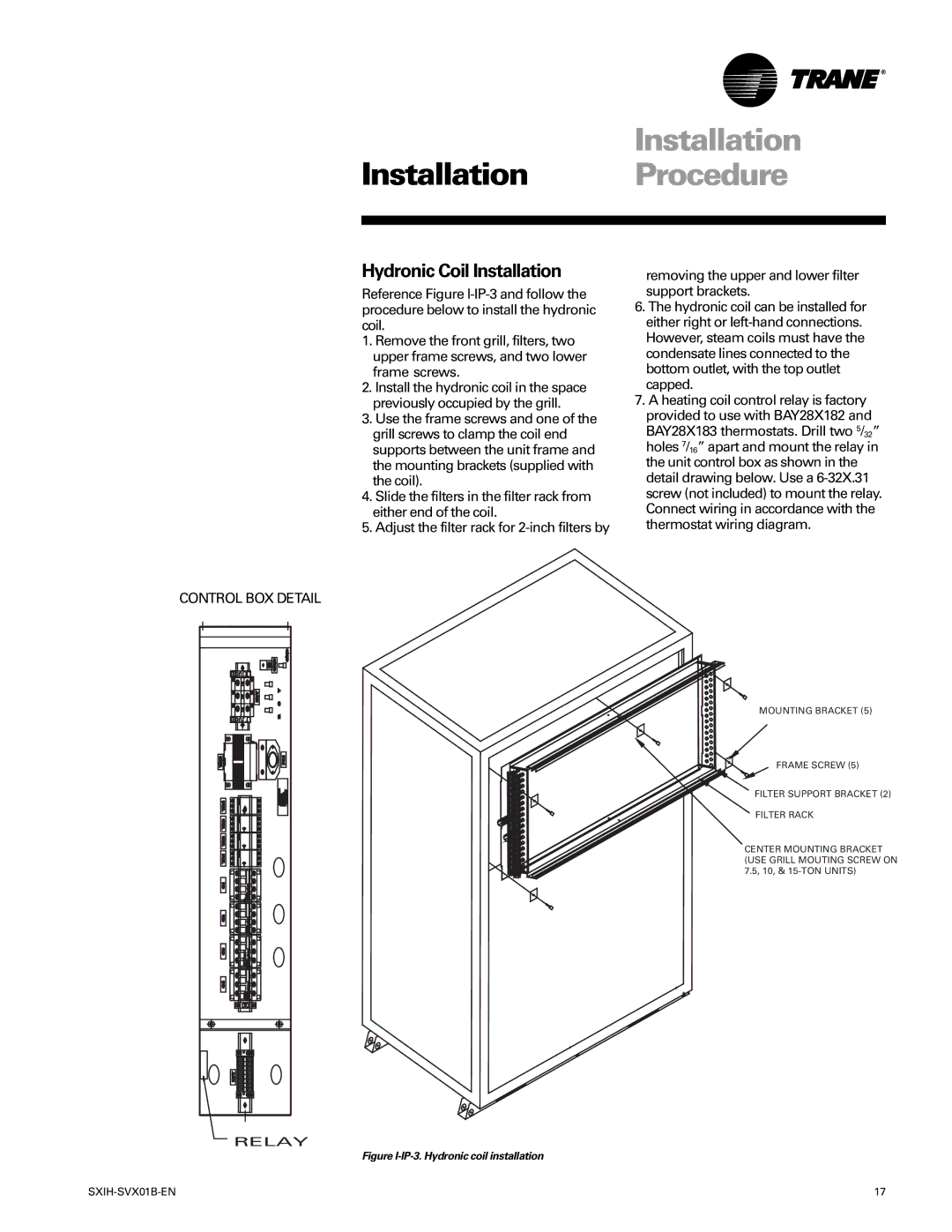SCIH specifications
The Trane SCIH, or Smart Communicating Indoor Unit, is a smart HVAC solution designed to provide both efficiency and comfort in commercial and residential spaces. This innovative system represents a significant advancement in climate control technology, integrating state-of-the-art features that cater to modern demands for convenience, connectivity, and sustainability.One of the standout features of the Trane SCIH is its advanced communication capability. The system utilizes Trane’s proprietary technology to facilitate seamless communication between various HVAC components, enabling real-time monitoring and adjustments. This integration ensures optimal performance by allowing end-users to manage their climate control settings efficiently from a central location or through a smartphone app.
The SCIH is also designed for high energy efficiency. It incorporates variable speed technology that adjusts the compressor and fan speeds according to the specific heating or cooling needs of the space. This not only reduces energy consumption but also minimizes fluctuations in temperature, creating a more comfortable indoor environment. Additionally, the unit's Energy Efficiency Ratio (EER) and Seasonal Energy Efficiency Ratio (SEER) ratings often exceed industry standards, making it an eco-friendly choice for sustainable building practices.
Another characteristic of the Trane SCIH is its compact and versatile design. The unit is engineered to fit in tight spaces, making it suitable for various building types, including retrofits in older structures. Its sleek design enhances aesthetic appeal without compromising performance, a key consideration for both commercial and residential applications.
Safety and ease of use are also priority features of the SCIH. The model includes built-in diagnostics that can identify issues early, enabling prompt maintenance and reducing the risk of system failures. User-friendly interfaces provide intuitive controls, making it accessible for users of all technical backgrounds.
Overall, the Trane SCIH embodies the convergence of technology, comfort, and efficiency. Its smart features, including advanced communication, variable speed technology, and compact design, position it as a leading solution in the HVAC market. This unit not only meets the needs of the present but is also prepared to adapt to future energy standards and user expectations, reinforcing Trane’s commitment to innovative climate solutions.

